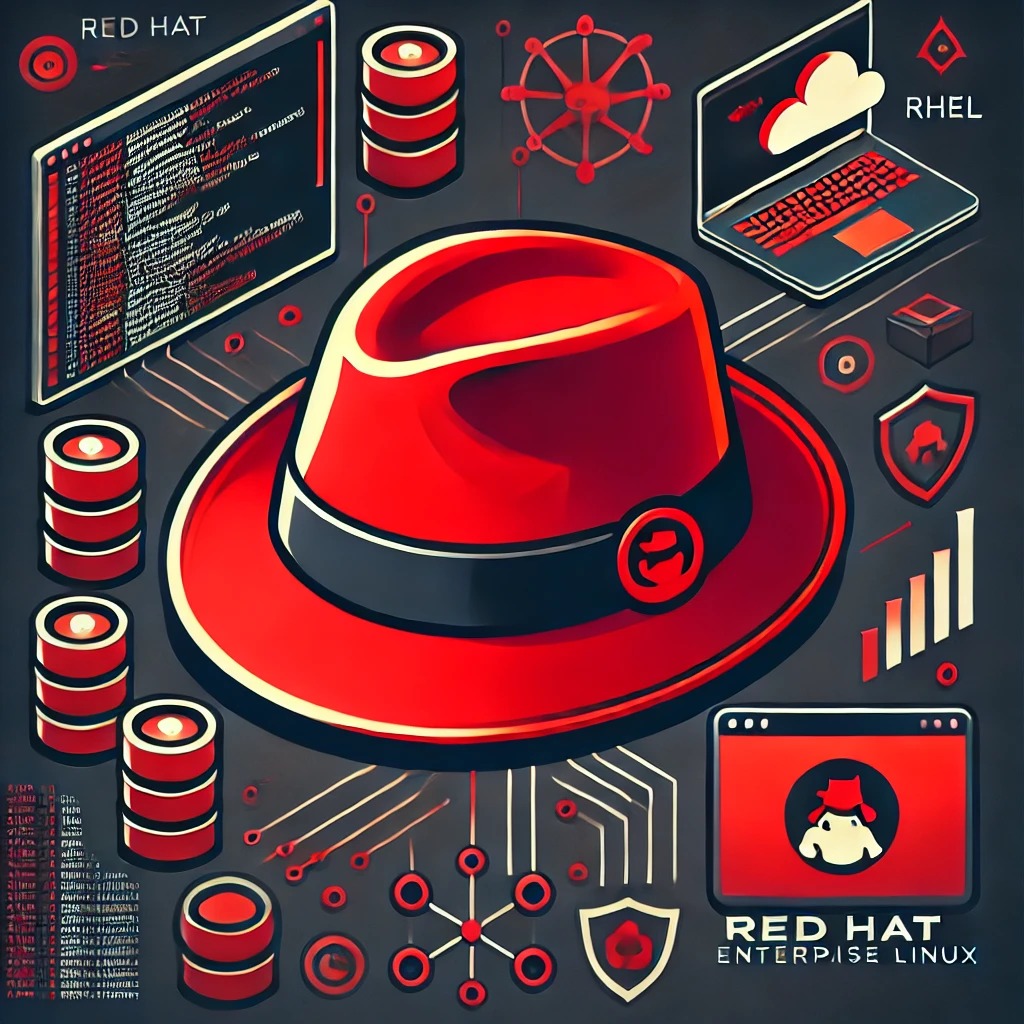A Comprehensive Guide to Learning Red Hat Linux: From Beginner to Professional

Categories:
4 minute read
Red Hat Enterprise Linux (RHEL) stands as one of the most respected and widely used enterprise Linux distributions in the corporate world. Whether you’re looking to advance your career in IT, prepare for Red Hat certification, or simply expand your Linux knowledge, this comprehensive guide will help you navigate your learning Red Hat Linux journey.
Understanding Red Hat Enterprise Linux
Red Hat Enterprise Linux is a commercial Linux distribution developed by Red Hat, Inc. It’s designed for enterprise computing environments and is known for its stability, security, and extensive support infrastructure. While RHEL itself requires a subscription, you can learn using CentOS Stream or AlmaLinux, which are compatible alternatives.
Getting Started with Red Hat Linux
Setting Up Your Learning Environment
Choose Your Learning Platform
Install RHEL using a developer subscription (free)
Use CentOS Stream as a development platform
Set up AlmaLinux as a RHEL alternative
Create virtual machines using VirtualBox or VMware
Essential Tools
Terminal emulator
SSH client
Text editor (vim, nano, or VSCode)
Web browser for documentation Fundamental Concepts to Master
System Access and Navigation
Basic Command Line Operations
Directory navigation (cd, ls, pwd)
File operations (cp, mv, rm)
Directory manipulation (mkdir, rmdir)
File viewing (cat, less, more)
User Management
Creating and managing users
Setting permissions
Understanding sudo privileges
Managing groups
System Administration Basics
Package Management
Using dnf (previously yum)
Managing repositories
Installing and updating packages
Managing dependencies
Service Management
systemctl commands
Starting/stopping services
Enabling services at boot
Checking service status
Intermediate Skills Development
System Configuration
Network Configuration
Setting up network interfaces
Configuring IP addresses
Managing DNS settings
Firewall configuration with firewalld
Storage Management
Partitioning disks
Creating filesystems
Managing logical volumes (LVM)
Mounting and unmounting filesystems Security Implementation
SELinux
Understanding SELinux modes
Managing contexts
Troubleshooting SELinux issues
Creating custom policies
System Hardening
Implementing password policies
Configuring SSH security
Managing system updates
Security auditing
Advanced Topics
Enterprise Features
High Availability
Clustering basics
Load balancing
Failover configuration
Resource management
Virtualization
KVM virtualization
Managing virtual machines
Resource allocation
Virtual networking Automation and Scripting
Shell Scripting
Bash scripting fundamentals
Automation scripts
System maintenance scripts
Error handling
Ansible Automation
Writing playbooks
Managing inventories
Role development
Running automated tasks
Learning Resources and Certification Path
Official Resources
Red Hat Learning Subscription
Online courses
Lab environments
Official documentation
Video content
Red Hat Developer Program
Free developer subscription
Technical resources
Community access
Development tools Certification Path
Red Hat Certified System Administrator (RHCSA)
Essential system administration skills
Foundation for advanced certifications
Hands-on practical exam
Valid for three years
Red Hat Certified Engineer (RHCE)
Advanced system administration
Automation with Ansible
Complex system configurations
Building on RHCSA skills
Practical Learning Approach
Hands-on Projects
Basic Projects
Setting up a web server
Configuring file sharing
Implementing backup solutions
Creating user management scripts
Advanced Projects
Building a mail server
Implementing monitoring solutions
Setting up a virtualization environment
Creating high-availability clusters Best Practices for Learning
Structured Learning
Follow a systematic approach
Practice regularly
Document your learning
Join study groups
Problem-Solving Skills
Troubleshooting methodologies
Reading system logs
Using documentation effectively
Community engagement
Career Opportunities
Job Roles
System Administrator
Managing RHEL systems
Implementing security measures
Handling system updates
User support
DevOps Engineer
Automation development
CI/CD implementation
Container management
Infrastructure as Code Industry Demands
Enterprise Requirements
High availability systems
Security compliance
Performance optimization
Disaster recovery
Growing Technologies
Container orchestration
Cloud integration
Automation platforms
Security frameworks
Tips for Success
Learning Strategy
Start with fundamentals
Practice in lab environments
Join online communities
Participate in forums
Common Pitfalls to Avoid
Skipping basics
Not practicing regularly
Ignoring documentation
Avoiding command line
Conclusion
Learning Red Hat Linux is a journey that requires dedication and systematic approach. The path from beginner to professional involves understanding core concepts, practicing regularly, and staying updated with evolving technologies. Whether your goal is certification, career advancement, or personal growth, the skills you develop will be valuable in today’s technology-driven world.
Remember that mastery comes through practice and real-world application. Start with the basics, build a strong foundation, and gradually move to more complex topics. Join communities, participate in discussions, and most importantly, maintain a consistent learning schedule.
The demand for Red Hat Linux expertise continues to grow, making it an excellent investment in your technical skill set. With dedication and the right approach, you can become proficient in Red Hat Linux and open doors to numerous career opportunities in enterprise IT environments.
Feedback
Was this page helpful?
Glad to hear it! Please tell us how we can improve.
Sorry to hear that. Please tell us how we can improve.